38+ Step-by-Step Guide on How to Wrap a Gift Perfectly: A Professional Finish Every Time
Understanding the Step-by-Step Guide on How to Wrap a Gift Perfectly transforms gift-giving from stressful obligation into joyful artistic expression.
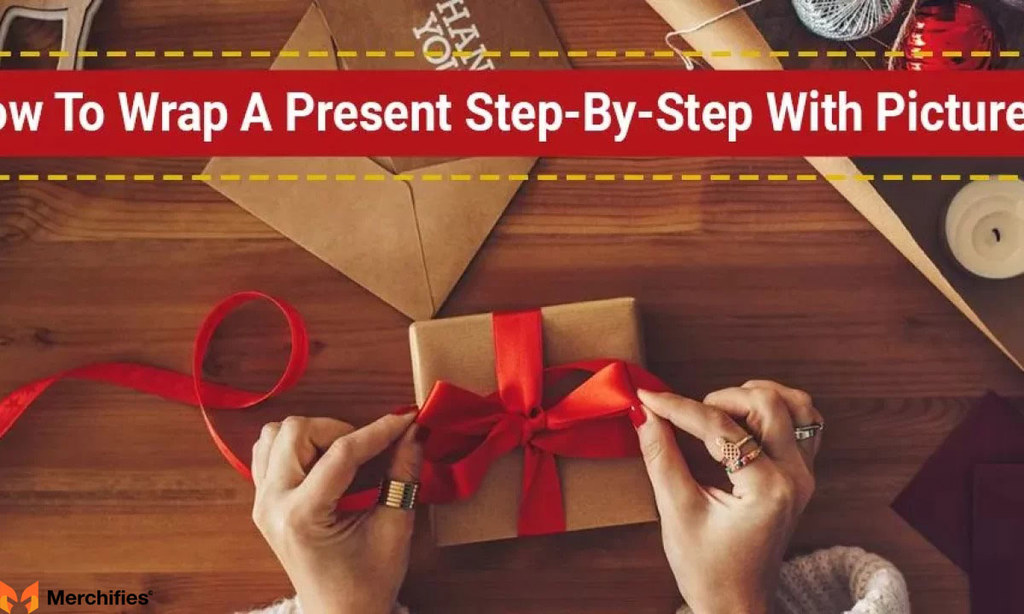
Blog Post Contents
We've all been there. You've got a fantastic gift, but the wrapping job looks like a toddler had a go at it. Crumpled paper, uneven edges, tape sticking out everywhere. It's a bit of a downer, right?
After eighteen years as a professional event planner and gift presentation specialist, I've witnessed countless beautifully chosen presents undermined by poor wrapping execution. The disappointment on both giver and receiver faces when gorgeous gifts emerge from sloppy packaging still breaks my heart.
You want your gifts to look as good as they feel, and honestly, a perfectly wrapped gift just adds that extra touch of magic.
Understanding the Step-by-Step Guide on How to Wrap a Gift Perfectly transforms gift-giving from stressful obligation into joyful artistic expression. Professional wrapping techniques aren't reserved for department store specialists—anyone can master these skills with proper instruction and practice. Luckily, with a few simple techniques and the right materials, you can achieve a professional finish every time.
The psychology behind beautiful gift presentation reveals fascinating insights about human perception and emotional response. Research shows that recipients judge gift value partially based on presentation quality, making wrapping skills crucial for maximizing your present's impact and appreciation.
Modern American gift-giving culture increasingly values presentation excellence as social media sharing creates pressure for Instagram-worthy packages. However, perfect wrapping serves deeper purposes than mere aesthetics—it demonstrates care, respect, and investment in the recipient's happiness.
This comprehensive guide will transform your wrapping abilities from amateur fumbling to professional-level presentation that creates anticipation, excitement, and lasting positive impressions for every gift-giving occasion.
The Science and Psychology of Perfect Gift Presentation
Perfect gift wrapping activates multiple psychological mechanisms that enhance the recipient's experience before they even see the actual present. Anticipation building, aesthetic appreciation, and perceived value all increase through expertly executed presentation techniques.
Neuroscience research reveals that beautiful visual presentations trigger dopamine release in viewers' brains, creating positive emotional associations that extend beyond the wrapped object itself. This biological response explains why investing time in presentation quality pays dividends in relationship building and gift appreciation.
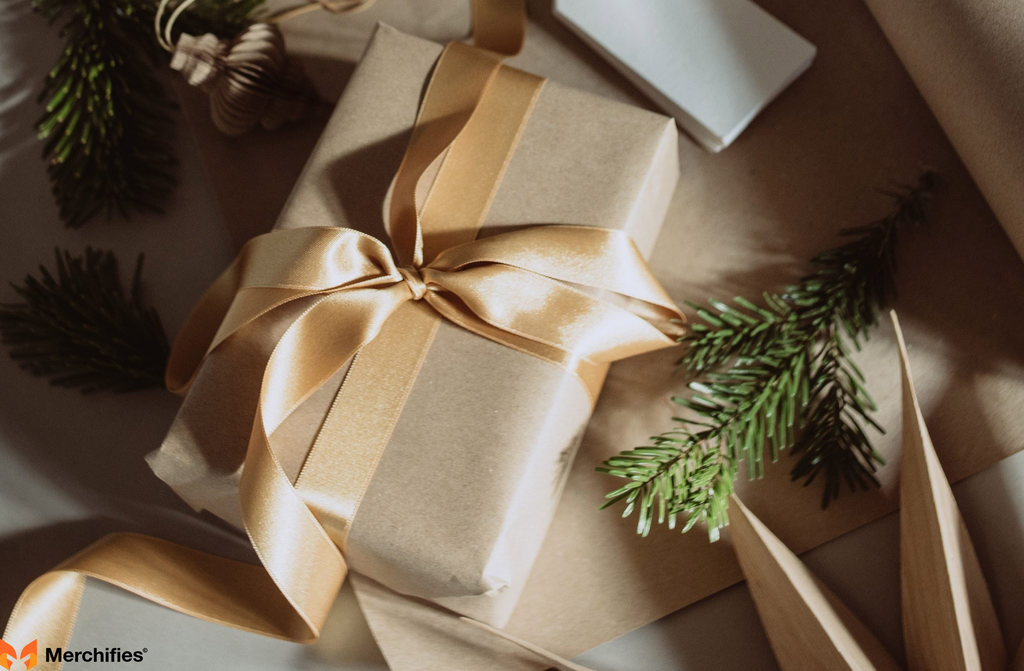
The Step-by-Step Guide on How to Wrap a Gift Perfectly leverages these psychological principles by creating visual harmony, maintaining suspense through concealment, and demonstrating the giver's care through attention to detail and craftsmanship quality.
Cultural considerations also influence wrapping expectations, with American gift-giving traditions emphasizing surprise, beauty, and personal investment that professional presentation techniques naturally support and enhance.
Essential Supply Gathering: Building Your Wrapping Foundation
First things first, gather your supplies. You'll need wrapping paper, of course, but not just any paper.
Supply quality determines the difference between amateur and professional wrapping results because inferior materials create frustration, limit technique options, and produce substandard visual outcomes regardless of skill level applied.
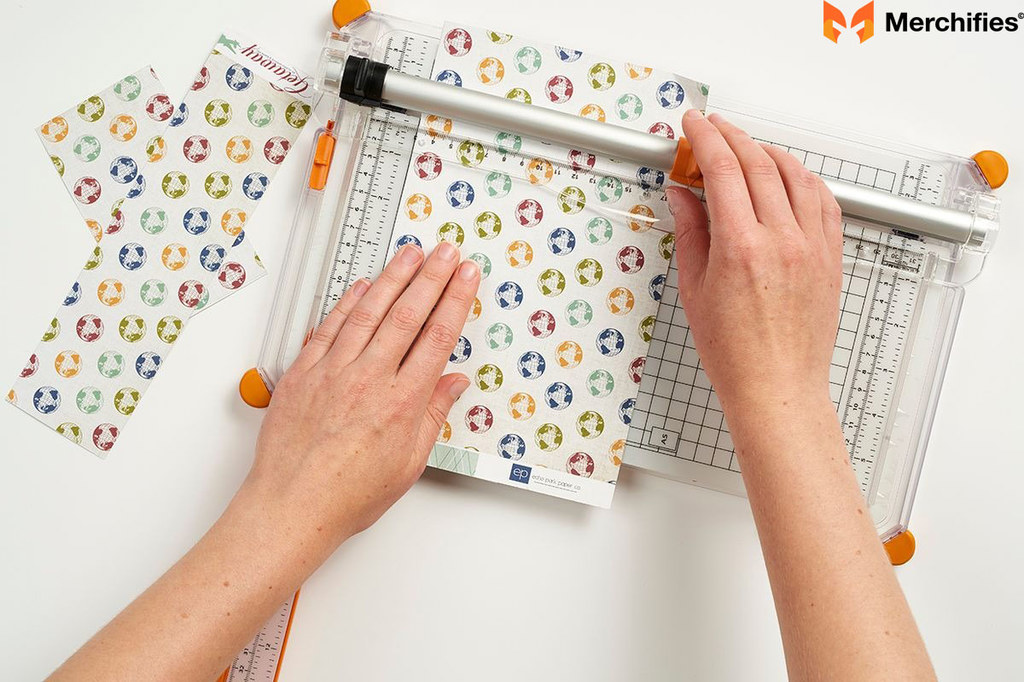
Choose something sturdy and with a nice design.
Paper selection requires balancing aesthetic appeal with functional durability. Thin papers tear easily and create wrinkled appearances, while overly thick materials resist folding and create bulky seams that compromise clean lines.
Sharp scissors are a must, along with good quality tape – the kind that disappears when you stick it down.
Tool quality impacts both process efficiency and final results. Dull scissors create ragged edges that look unprofessional, while poor tape either fails to adhere properly or creates visible, unsightly seams that destroy the seamless appearance.
Professional-Grade Equipment Investment
Ribbons, bows, and tags are the finishing touches.
Embellishment materials provide opportunities for creativity and personalization while serving practical functions like gift identification and aesthetic enhancement. Quality ribbons hold their shape better and create more impressive bows than budget alternatives.
And if you're serious about your wrapping game, a paper cutter and double-sided tape are game-changers.
Professional equipment investment pays dividends through improved efficiency, better results, and reduced frustration during the wrapping process. Paper cutters create perfectly straight edges that scissors cannot match consistently.
I've learned that investing in good supplies makes a huge difference.
This experience-based insight reflects the reality that quality materials enable techniques impossible with inferior supplies while reducing the skill level required to achieve professional-looking results.
During my event planning career, I've observed that clients who invest in proper wrapping supplies consistently produce better results and report more enjoyable wrapping experiences than those attempting professional techniques with inadequate materials.
Comprehensive Supply Checklist
Beyond basic materials, consider investing in bone folders for crisp creases, multiple tape types for different applications, and storage solutions that keep supplies organized and easily accessible during wrapping sessions.
Quality measurement tools like rulers or cutting mats with grid lines help ensure accuracy that translates into professional-looking finished products. These investments pay for themselves through improved results and reduced material waste.
Strategic Paper Measurement and Cutting Techniques
Now, let's get down to business. Measure your gift carefully.
Accurate measurement prevents both material waste and inadequate coverage that forces awkward adjustments or complete rewrapping. This foundational step determines success for all subsequent techniques and final presentation quality.
You want enough paper to cover it, but not so much that you're wrestling with excess.
The balance between adequate coverage and manageable excess requires understanding how different folding techniques affect paper requirements. Box gifts need different allowances than cylindrical packages or irregular shapes.
Lay the gift on the paper and leave about an inch or two on each side.
This general guideline works for standard rectangular boxes but requires adjustment based on gift dimensions, wrapping technique selection, and desired aesthetic outcomes. Larger gifts might need proportionally less excess while small items benefit from slightly more allowance.
Professional Cutting Standards
Use your scissors or a paper cutter to make clean, straight cuts. No jagged edges here.
Clean cutting creates the foundation for all subsequent folding and taping techniques. Ragged edges prevent tight seams and create unprofessional appearances that no amount of skillful folding can overcome.
I always measure twice, cut once.
This carpentry principle applies perfectly to gift wrapping because paper cutting mistakes cannot be undone, often requiring complete restart with new materials. The extra measurement time prevents costly errors and material waste.
Professional gift wrappers develop systematic measurement approaches that ensure consistency across multiple packages while minimizing errors that compromise presentation quality or waste expensive materials.
Advanced Measurement Strategies
Consider creating measurement templates for frequently wrapped item types like books, standard shipping boxes, or wine bottles. These guides speed up the process while ensuring consistent, professional results.
For oddly shaped items, use flexible measuring tape or string to determine paper requirements before cutting. This technique prevents underestimating coverage needs for complex shapes that don't conform to standard rectangular dimensions.
Mastering Clean and Crisp Folding Techniques
This is where the magic happens.
Folding technique separates amateur wrapping from professional presentation because precise creases create clean lines, sharp corners, and seamless appearances that elevate any gift's perceived value and giver's thoughtfulness demonstration.
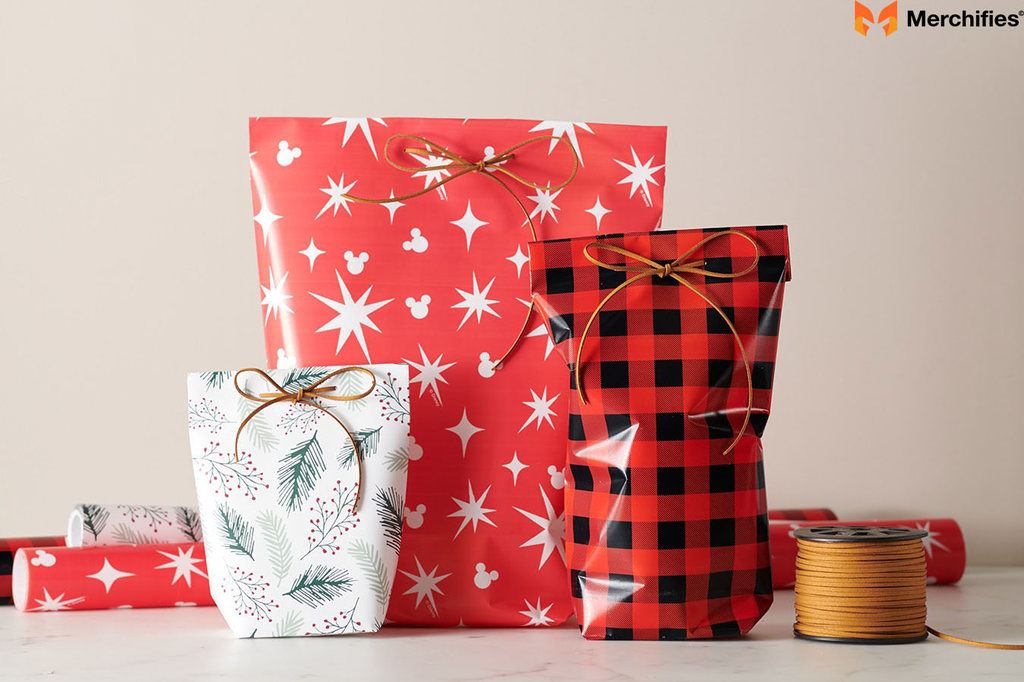
Fold the paper along the edges of the gift, creating sharp, neat creases.
Crease quality depends on paper type, folding pressure, and technique consistency. Each fold should be deliberate and precise, creating permanent lines that maintain their sharpness throughout the wrapping process.
Think of it like folding origami.
This comparison highlights the precision and mindfulness required for excellent folding. Origami principles—patience, accuracy, and attention to detail—translate perfectly to gift wrapping applications.
Corner Mastery Techniques
Pay close attention to the corners, making sure they're crisp and even.
Corner execution often determines overall presentation success because imperfect corners create visual distractions that draw attention away from the gift's beauty and toward the wrapper's skill limitations.
Visual aids are your best friend here – look up a quick video if you're unsure.
Learning complex folding techniques benefits from visual demonstration because spatial relationships and hand movements are difficult to convey through text alone. Video resources provide valuable supplementary instruction.
A bone folder can help with especially crisp folds.
Professional tools create results impossible to achieve with improvised alternatives. Bone folders apply consistent pressure while protecting paper surfaces from finger oils and inconsistent creasing that can compromise appearance.
Advanced Folding Applications
Hospital corners, envelope folds, and Japanese wrapping techniques offer alternatives to standard folding methods that can enhance presentation for specific gift types or aesthetic preferences.
Practice these techniques on test packages before applying them to actual gifts. Muscle memory development through repetition ensures smooth execution during actual gift wrapping when perfection matters most.
Strategic Tape Application and Seam Concealment
Use your tape to secure the paper, but do it cleverly. Hide those seams.
Tape placement strategy distinguishes professional wrapping from amateur attempts because visible tape disrupts visual flow and creates industrial rather than elegant appearances that diminish gift presentation impact.
Double-sided tape is your secret weapon for a seamless look.
Double-sided tape eliminates visible adhesive while creating stronger, more professional connections between paper surfaces. This investment in premium materials pays dividends through dramatically improved visual results.
Avoid wrinkles and tears by pressing the paper down firmly.
Proper tape application requires understanding adhesive properties, paper behavior, and pressure distribution techniques that secure materials without creating damage or unsightly appearances.
Minimalist Taping Philosophy
And remember, less is more. You don't need a mile of tape.
Excessive tape usage creates bulk, visible lines, and amateur appearances that detract from elegant presentation goals. Strategic placement achieves security without compromising aesthetics.
I've found that small pieces of tape work best.
This experience-based insight reflects the reality that multiple small tape pieces provide better control, easier adjustments, and more professional results than fewer large pieces that can overwhelm delicate paper surfaces.
During retail display work, I learned that the most elegant packages often used minimal tape strategically placed to maintain clean lines while ensuring package integrity throughout handling and transportation.
Professional Taping Techniques
Consider tape placement patterns that distribute stress evenly across paper surfaces while maintaining structural integrity. Corner reinforcement, edge sealing, and stress point protection all contribute to professional results.
Temperature and humidity affect tape adhesion, so adjust application techniques based on environmental conditions. Cold environments require longer pressure application while humid conditions might need moisture barriers.
Conquering Irregularly Shaped Gift Challenges
Okay, this is where things get tricky.
Irregular shapes test wrapping skills because standard rectangular techniques don't translate directly to cylinders, spheres, or complex geometric forms that require creative problem-solving and adapted methodologies.
Cylinders, spheres, and other odd shapes can be a challenge.
Each shape category requires specific technique modifications that accommodate three-dimensional geometry while maintaining professional appearance standards and structural integrity throughout handling.
For cylinders, you can roll the gift in the paper like a tube.
Cylindrical wrapping techniques involve different folding patterns, seam placement strategies, and end finishing methods that create clean appearances while accommodating the unique structural requirements of tubular objects.
Shape-Specific Solutions
For spheres, you might want to use fabric or tissue paper.
Spherical objects resist traditional paper wrapping because their curves prevent clean folding and create excess material that bunches awkwardly. Alternative materials and techniques better accommodate these challenging forms.
And for other odd shapes, think outside the box.
Creative problem-solving becomes essential for unusual gift forms that don't conform to standard wrapping assumptions. Innovation and flexibility often produce better results than forcing traditional techniques onto inappropriate applications.
Sometimes, a gift bag is your best friend.
Practical alternatives acknowledge that some gifts resist traditional wrapping techniques entirely. Professional gift presentation includes knowing when to employ alternative approaches that better serve the specific situation.
Learning Resources and Adaptation
There are plenty of videos on YouTube that show you how to wrap these tricky gifts.
Video demonstrations provide invaluable guidance for complex techniques that benefit from visual instruction and step-by-step observation. These resources supplement written instructions effectively.
Consider creating practice sessions with various unusual shapes to develop problem-solving skills and technique adaptations before encountering these challenges during actual gift-wrapping situations.
Creative Embellishment and Personalization Strategies
Now for the fun part!
Embellishment represents the creative culmination of technical wrapping skills, providing opportunities for personal expression, artistic flair, and unique touches that distinguish your gifts from standard commercial presentation.
Ribbons, bows, tags, oh my! Use your imagination.
Creative freedom in embellishment allows for personality expression while maintaining professional appearance standards. The key lies in balancing creativity with restraint to avoid overwhelming the gift's inherent beauty.
Tie a beautiful bow, add a personalized tag, or use some decorative tape.
These traditional embellishments provide starting points for creative exploration while ensuring appropriate sophistication levels that enhance rather than distract from the gift's presentation quality.
Advanced Personalization Techniques
You can even add small trinkets or ornaments to personalize the gift.
Three-dimensional embellishments create textural interest and personal connections that flat decorations cannot achieve. However, they require careful integration to maintain package integrity and shipping viability.
This is your chance to shine.
Personal expression through embellishment transforms functional wrapping into artistic statement that reflects the giver's creativity, thoughtfulness, and investment in the recipient's experience.
I like to use natural elements, like pinecones or leaves, for a rustic touch.
Natural embellishments provide seasonal appropriateness, environmental consciousness, and unique aesthetic qualities that manufactured decorations cannot replicate. They also demonstrate creativity and resourcefulness.
Seasonal and Thematic Considerations
Consider coordinating embellishments with seasons, holidays, or personal themes that resonate with the recipient's interests or the gift-giving occasion. This attention to context enhances the overall presentation coherence.
Color coordination between paper, ribbons, and embellishments creates visual harmony that elevates the entire package appearance. Understanding basic color theory improves embellishment selection and combination choices.
Final Presentation and Quality Control
Before you hand over your masterpiece, take a moment to admire it.
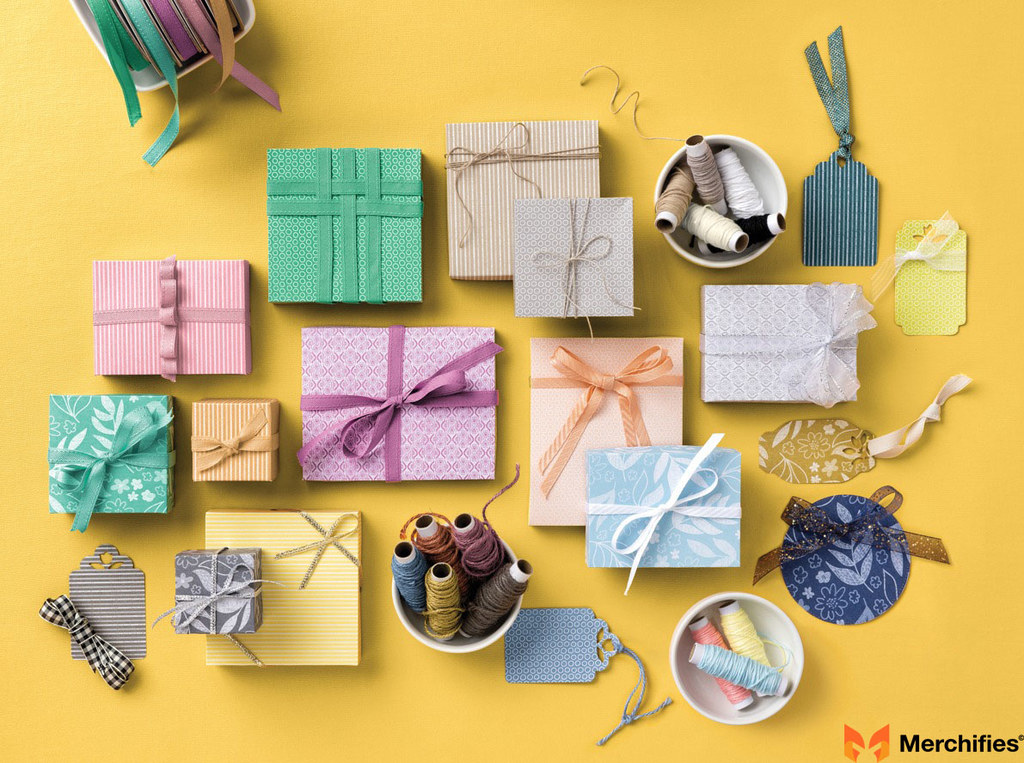
Quality control represents the final opportunity to identify and correct any imperfections that might detract from the professional appearance you've worked to create through careful technique application.
Make sure everything is neat and tidy.
Final inspection should cover all visible surfaces, checking for loose tape, uneven edges, crooked embellishments, or other details that could compromise the overall presentation impact.
A polished presentation makes a huge difference.
The cumulative effect of attention to detail in every aspect of wrapping creates presentations that exceed recipient expectations while demonstrating the giver's care and investment in their happiness.
Essential Finishing Elements
And don't forget the gift tag!
Gift identification serves practical purposes while providing additional personalization opportunities through handwriting, decorative elements, or creative tag selection that complements the overall presentation theme.
A handwritten note adds a personal touch.
Personal messages create emotional connections that transcend the physical gift while demonstrating investment in the relationship that extends beyond material presentation into genuine communication.
A well presented gift shows that you care.
This fundamental principle underlies all professional wrapping techniques because the presentation quality directly communicates the giver's attitude toward the recipient and the importance they place on the relationship.
Professional Standards Maintenance
Consider photographing exceptionally successful wrapping jobs to create personal reference materials that document effective technique combinations and aesthetic choices for future replication.
Maintain consistent quality standards across all gifts regardless of recipient or occasion importance. This consistency builds your reputation as someone who consistently delivers beautiful presentations.
Sustainable DIY Gift Bag Creation
Are you running out of gift bags? No problem!
DIY gift bag creation addresses both practical needs and environmental concerns by repurposing wrapping materials while maintaining professional presentation standards through creative adaptation of traditional techniques.
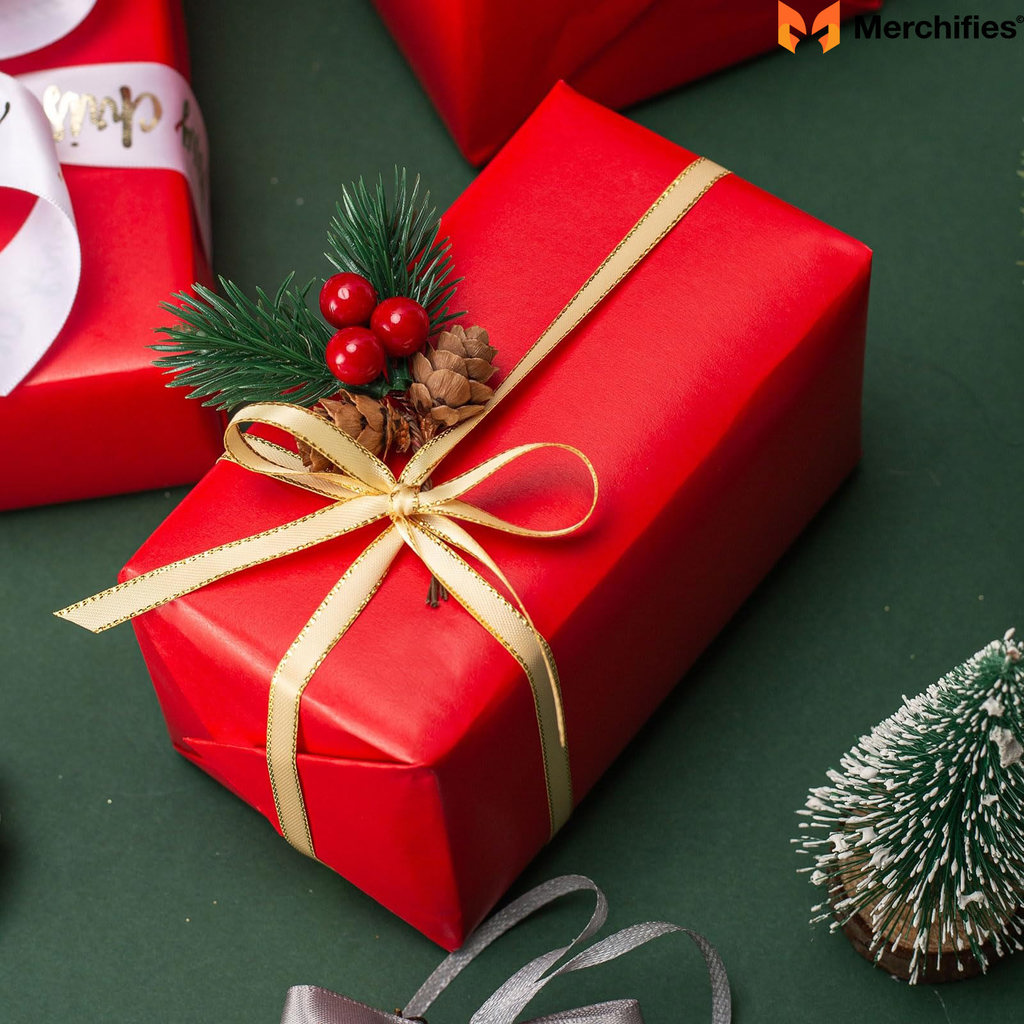
Get creative and transform leftover wrapping paper into a charming and eco-friendly gift bag with this easy DIY guide with Step-by-Step Guide on How to Wrap a Gift Perfectly.
Environmental consciousness increasingly influences consumer choices, making sustainable alternatives attractive options that demonstrate values alignment while maintaining aesthetic and functional quality.
It's a great way to add a personal touch and reduce waste.
Handmade gift bags provide uniqueness impossible to achieve with commercial alternatives while offering creative expression opportunities that enhance the personal connection between giver and recipient.
Detailed Construction Process
Measure and Cut: Start by cutting a piece of wrapping paper large enough to cover your gift, with about an inch of excess on all sides.
Precise measurements ensure adequate coverage while minimizing waste. The construction process requires systematic approach that builds complexity gradually through manageable steps.
Create the Sides: Fold the paper in half lengthwise, ensuring one side overlaps the other by half an inch. Secure this overlapped edge with tape to create the sides of your bag.
Side construction creates the basic bag structure that must be sturdy enough to support the intended contents while maintaining attractive appearance throughout use.
Create the Bottom: Fold the bottom edge of the paper upwards, leaving enough space to comfortably accommodate your gift. Then, flatten the corners to form two triangular flaps on each side.
Bottom construction requires understanding of structural engineering principles that distribute weight effectively while creating flat surfaces that allow the bag to stand independently.
Advanced Finishing Techniques
Secure the Base: Fold the opposite edges of the bottom flap towards the center, overlapping them, and secure them with tape to create the base of your bag.
Base security ensures structural integrity throughout handling while maintaining clean appearance that rivals commercial bag quality through proper folding and securing techniques.
Fill and Decorate: Gently open your DIY gift bag and place your present inside. Fold the top edges down and decorate as desired with string, ribbons, or even festive ornaments.
Decoration opportunities provide creative expression while serving functional purposes like closure security and aesthetic enhancement that personalizes the finished product.
For an extra touch, punch two holes near the top and thread a ribbon through to create a closure and a beautiful bow.
Advanced finishing techniques elevate DIY bags to professional quality while providing functional improvements that enhance both appearance and usability for the recipient.
Advanced Techniques for Different Gift Categories
Understanding Step-by-Step Guide on How to Wrap a Gift Perfectly requires recognizing that different gift categories—books, clothing, electronics, fragile items, and food products—each present unique challenges requiring adapted techniques and specialized approaches.
Book wrapping benefits from techniques that accommodate rectangular shapes while protecting corners and edges from damage. Consider using cardboard reinforcement for valuable or delicate volumes.
Clothing items often have irregular shapes that resist traditional folding techniques. Flat folding, strategic padding, and flexible wrapping approaches work better than rigid rectangular methods.
Electronics and Fragile Items
Electronic gifts require extra protection considerations alongside aesthetic presentation. Bubble wrap integration, corner protection, and moisture barriers might be necessary while maintaining visual appeal.
Fragile items need specialized techniques that prioritize protection without compromising presentation quality. Multiple layer approaches, cushioning integration, and careful handling protocols become essential.
Food and Perishable Presents
Food gifts require consideration of temperature sensitivity, moisture protection, and potential leakage that could damage wrapping materials or surrounding gifts during transportation or storage.
Consider food-safe materials, temperature-appropriate packaging, and presentation techniques that accommodate special handling requirements while maintaining attractive appearances.
Cultural and Seasonal Wrapping Considerations
American gift-giving occasions span diverse cultural celebrations that each carry unique presentation expectations and traditional aesthetic preferences requiring sensitivity and appropriate adaptation.
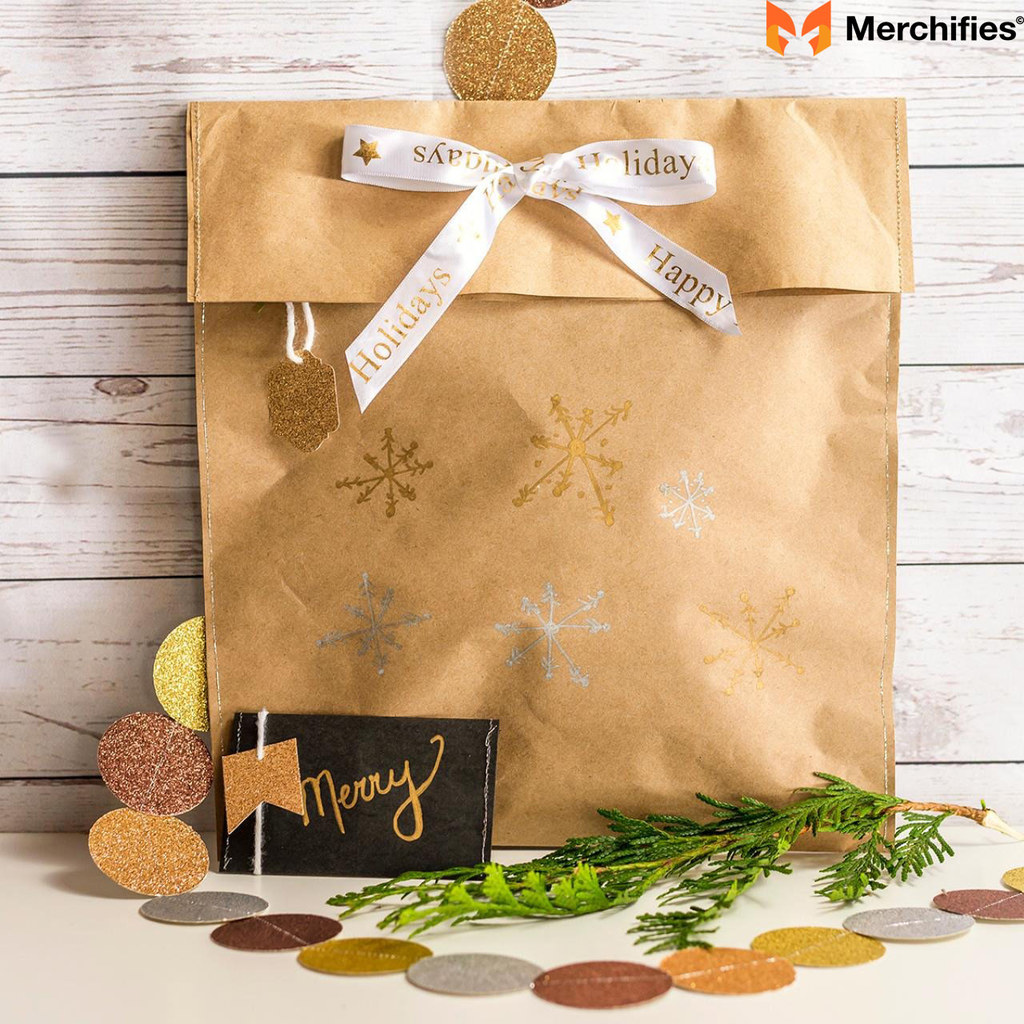
Christmas wrapping traditionally emphasizes red and green color schemes, religious symbolism, and festive embellishments that reflect the holiday's cultural significance and widespread celebration patterns.
Birthday presentations allow greater creative freedom while focusing on personal preference reflection, age-appropriate themes, and individual celebration rather than cultural conformity requirements.
Professional and Business Contexts
Workplace gift exchanges require conservative presentation approaches that maintain professional boundaries while expressing appropriate appreciation and respect for colleagues and business relationships.
Corporate gifts need presentation quality that reflects company values while avoiding overly personal touches that might create inappropriate intimacy in professional contexts.
Frequently Asked Questions About Perfect Gift Wrapping
What's the best type of wrapping paper for beginners?
Choose medium-weight paper with subtle patterns that hide minor imperfections while providing enough body to hold crisp folds. Avoid very thin papers that tear easily or thick papers that resist folding cleanly.
How do I prevent tape from showing on my wrapped gifts?
Use double-sided tape whenever possible, place single-sided tape on paper edges that will be hidden by folds, and consider decorative tapes that enhance rather than detract from the overall appearance.
What should I do if I cut the paper too small?
Add decorative bands of coordinating paper, use ribbon strategically to cover gaps, or transform the mistake into a design element through creative embellishment placement that makes the gap appear intentional.
How can I wrap gifts when I don't have a large flat surface?
Use the floor with a clean blanket or sheet, work in sections by partially wrapping then adjusting position, or invest in a portable wrapping board that creates adequate workspace anywhere.
What's the secret to making perfect bows?
Practice with inexpensive ribbon until the motions become automatic, use wire-edged ribbon that holds its shape better, and consider making bows separately then attaching them rather than tying them directly on packages.
How far in advance can I wrap gifts?
Most wrapped gifts store well for weeks if kept in dry conditions away from direct sunlight. However, avoid wrapping perishable items too early and consider protection from pets or children who might damage packages.
Building Long-Term Wrapping Expertise
Developing consistent wrapping excellence requires systematic practice, technique experimentation, and ongoing skill refinement that builds muscle memory and aesthetic judgment through repeated application.
Create practice sessions using empty boxes and inexpensive materials to develop technique proficiency without the pressure of perfecting actual gifts during important occasions.
Document successful techniques, color combinations, and embellishment approaches that work well for your style and preferences. This personal reference library accelerates future wrapping projects.
Professional Development Strategies
Consider taking workshops or classes from professional gift wrappers who can provide personalized instruction and immediate feedback that accelerates skill development beyond self-taught methods.
Observe professional wrapping at high-end retail stores to identify techniques and aesthetic choices that create premium appearances worth emulating in personal gift presentation.
Technology and Modern Wrapping Innovations
Modern technology offers tools and resources that enhance traditional wrapping techniques while providing new creative possibilities for contemporary gift presentation that leverages digital connectivity and social sharing.
Online tutorials, mobile apps with measurement calculators, and digital inspiration galleries provide resources that supplement traditional learning methods with interactive guidance and visual examples.
Social media platforms offer inspiration sources and technique sharing communities that connect gift wrapping enthusiasts worldwide, creating opportunities for learning and creative exchange.
Digital Integration Opportunities
Consider creating digital gift catalogs with photos of wrapped presents to track successful techniques and maintain inspiration for future projects that build on past successes.
QR codes on gift tags can link to digital messages, photo albums, or video greetings that extend the gift experience beyond physical presentation into digital interaction.
Conclusion: Mastering the Art of Professional Gift Presentation
Perfect gift wrapping is an art, but it's an art you can master.
Throughout my career helping people create memorable celebrations and meaningful presentations, I've observed that wrapping skills develop through consistent practice, attention to detail, and genuine desire to create joy for gift recipients.
With a little practice and the right techniques, you can achieve a professional finish every time.
The Step-by-Step Guide on How to Wrap a Gift Perfectly provides systematic approaches that transform amateur fumbling into confident execution of professional-quality presentation techniques that enhance every gift-giving experience.
So, grab your supplies and give it a try.
Implementation begins with gathering proper materials, practicing basic techniques, and gradually building complexity through experience with different gift types, shapes, and presentation challenges that develop versatility and confidence.
Your gifts will look as good as they feel with Step-by-Step Guide on How to Wrap a Gift Perfectly.
The investment in learning proper wrapping techniques pays dividends through enhanced recipient appreciation, improved gift-giving reputation, and personal satisfaction that comes from creating beautiful presentations that honor both the gift and the relationship.
And who knows, you might even enjoy the process.
Many people discover that gift wrapping becomes a meditative, creative activity that provides stress relief and artistic expression opportunities while serving the practical purpose of beautiful gift presentation that strengthens relationships and creates lasting positive memories.
Start practicing these techniques today with whatever supplies you have available, gradually investing in better materials and tools as your skills develop and your appreciation for quality presentation grows through successful experiences and recipient reactions.